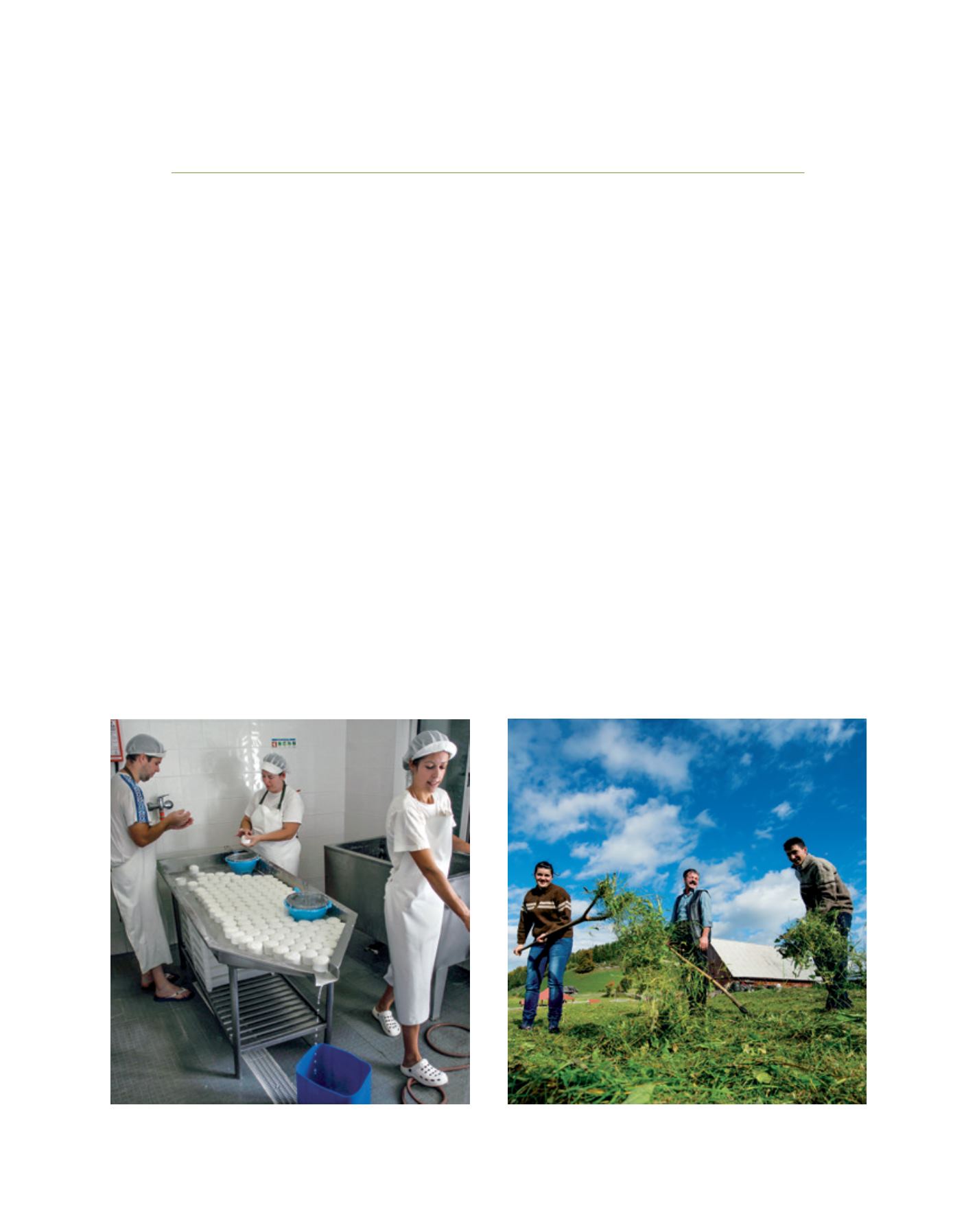

[
] 195
Family farming in the European Union
Jerzy Plewa, Director-General, Agriculture and Rural Development, European Commission
F
amily farming is the most common operational
farming model in Europe – representing 97 per cent
of the European Union’s (EU) 12 million farms.
1
Thus it is of great importance in the EU. It covers a diverse
range of situations, including farms of all sizes.
While there are obvious differences across regions and countries
of the world when it comes to family farming, there is also much
common ground. Below some of the key challenges and oppor-
tunities for family farms across the EU are identified, together
with the policy solutions introduced in the EU to address them.
The new 2014-2020 Common Agricultural Policy (CAP) that
was agreed in 2013 offers a robust policy to maintain the rich
diversity of family farms in the European agricultural sector and
to ensure sustainability. The CAP continues to provide support
to farmers through direct payments and measures to support
agricultural, environmental and territorial development under
the rural development programmes. Some of these measures
are of particular relevance for family farming.
Under the new direct payment regime,
2
Member States now
have the possibility to establish a simplified scheme for small
farmers under which they will be able to receive annual direct
support ranging from €500 to €1,250. They will be subject to
reduced administrative formalities, and exempted from certain
environmental obligations. Member States can also choose to
pay a redistributive payment – a top-up to support small and
middle-sized farms. Furthermore a scheme will specifically
address the challenge of generation renewal by giving farmers
up to the age of 40 an additional top-up payment for up to five
years. As part of the market measures, the reform also contains
measures to enhance producers’ organizations.
Under the rural development elements of the CAP,
the modified European Agricultural Fund for Rural
Development (EAFRD) also enables spending on a raft of
proven measures to strengthen the sustainability of smaller
family farms through regional or national rural develop-
ment programmes. These measures include support for
training and advice,
3
economic improvements (such as
physical investments, business development),
4
cooperation
to overcome small-scale disadvantages (such as setting up
producer groups, jointly developing short supply chains,
new technologies),
5
and compensation for environmental
commitments (such as voluntarily improved environmental
or organic farming standards).
6
Modern techniques help family farmers to preserve traditional production
methods and meet high food standards
Annual agri-environment payments encourage farmers to carry out
environmentally beneficial activities on their land
Image: European Commission
Image: European Commission
D
eep
R
oots
















